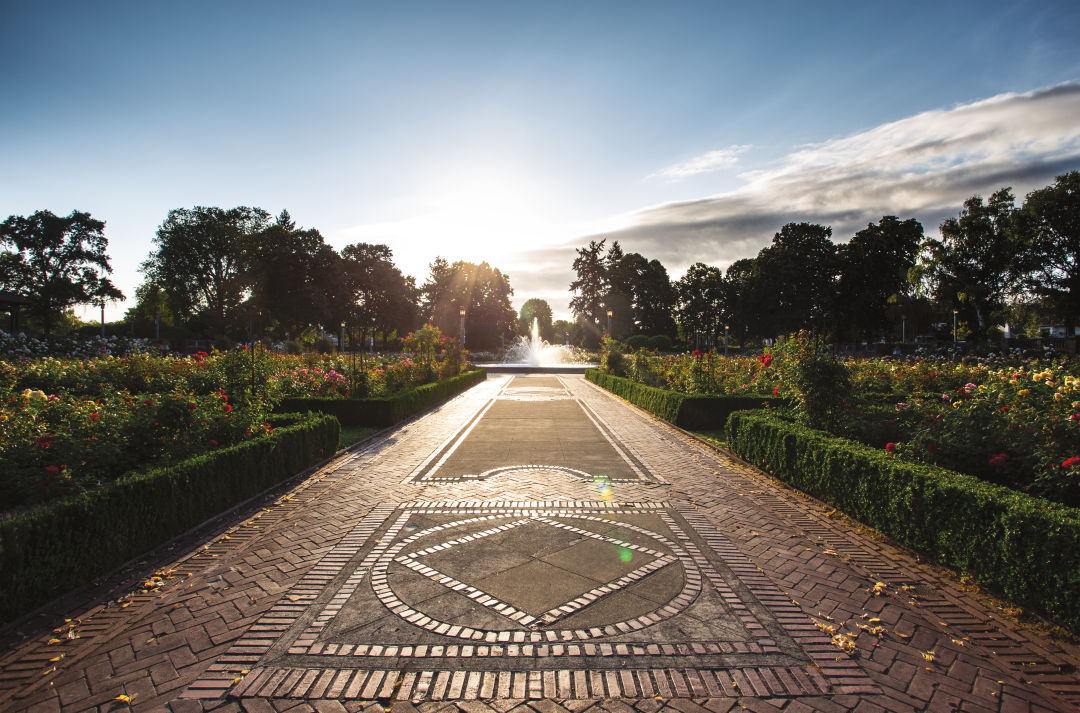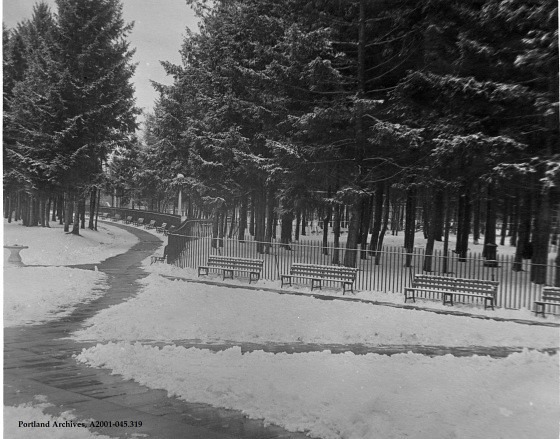
For my field report I will be focusing on the trees of Peninsula Park. Peninsula Park is in the Piedmont neighborhood of North Portland. In 1909, land for the park was acquired from Liverpool Liz, a woman who was notorious at the time for owning many saloons in Old Town when it was illegal for a woman to do so. The park was designed by Emanuel Mische and became Portland’s first public rose garden. The park is about 16.27 acres and serves as a place for many recreational activities. Many people within the neighborhood, and the city, can enjoy the walking paths, explore the rose garden, use the tennis and basketball courts, sunbathe or play sports in the large field, bring kids to the playgrounds, or utilize the covered picnic areas. The park also contains a gazebo and a community center with an outdoor swimming pool at the north entrance.
In general, green spaces close to where people live and work are important for improving the health and well-being for citizens in many ways. Additionally, urban trees provide a variety of ecological benefits. I am interested in this park for several reasons: 1) it’s close in proximity to where I live, 2) trees in the park are a part of it’s fascinating history, and 3) for its size, it’s largely populated with many types of vegetation and trees, which provides several ecosystem services.

Historically, the park was designed to have trees planted along the walkways at the north end of the rose garden to create the appearance of two distinct park sections. Many trees have been removed and/or added to the park since. According to Portland Parks and Recreation, out of the 290 trees, there are 136 native to the Pacific Northwest planted in the park. Of the native trees, 126 are Douglas-fir.
I will be examining the species diversity within the park and investigating the dynamics involved, i.e. how it functions as a habitat for generalists, how it improves urban forest health, and the benefits the services may provide, etc. Additionally, I will conduct a survey of the area in person to analyze the diversity and distribution of trees in different sites within the park, distinguishing between locations. I thought it would be fun to compare the current state of the park to historical records, but that might not be feasible. I will be using the Portland Parks and Recreation arcgis map for tree identification.
Portland Parks & Recreation | The City of Portland, Oregon. Retrieved April 26, 2020, from https://www.portlandoregon.gov/parks/
Great start! I love the idea of your attempting to do a bit of a historical analysis. Looking at the snowy photo you posted from 1913, I’m betting that you could create an estimate of tree density, maybe even basal area from pictures like that to compare to mesurements of the current stand made by Portland Parks.
LikeLike